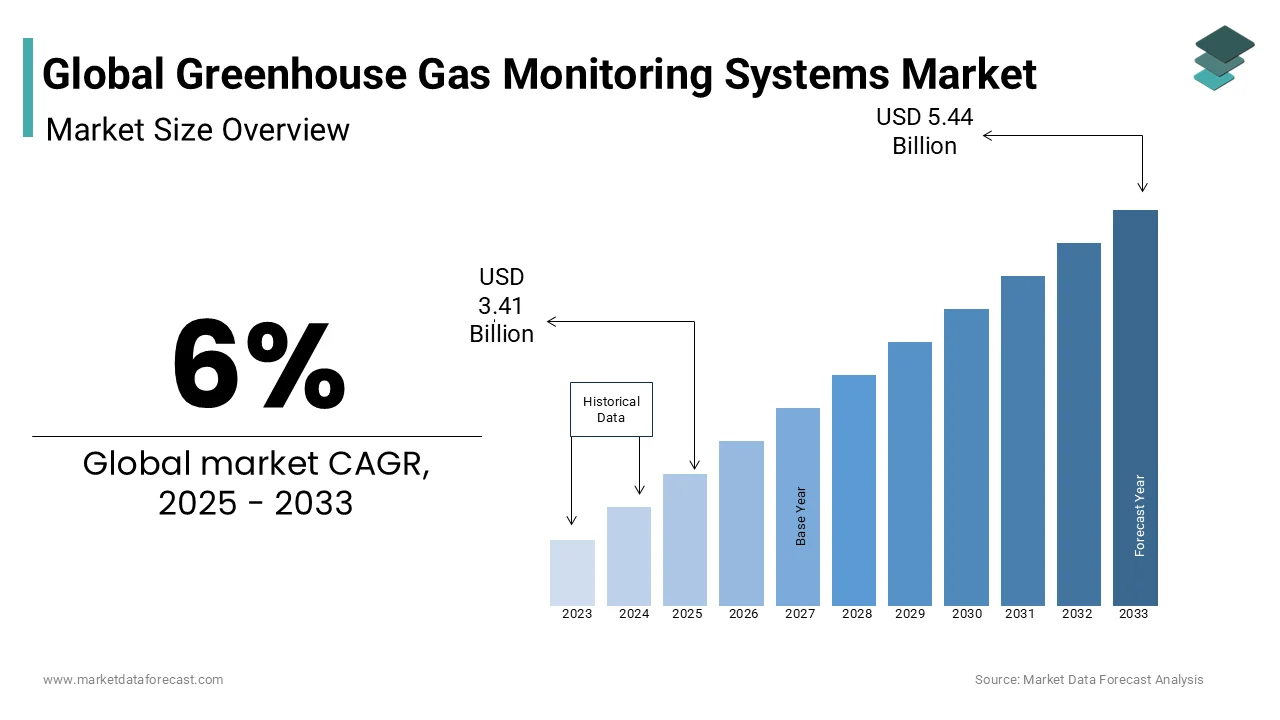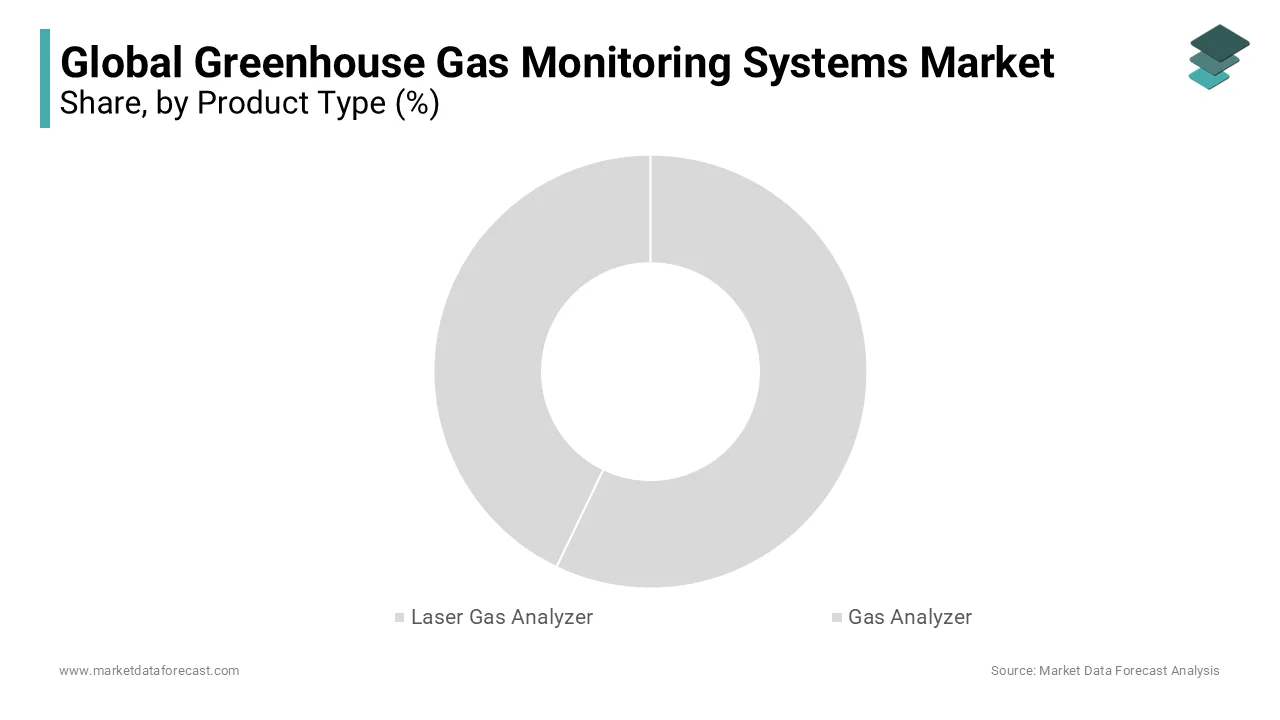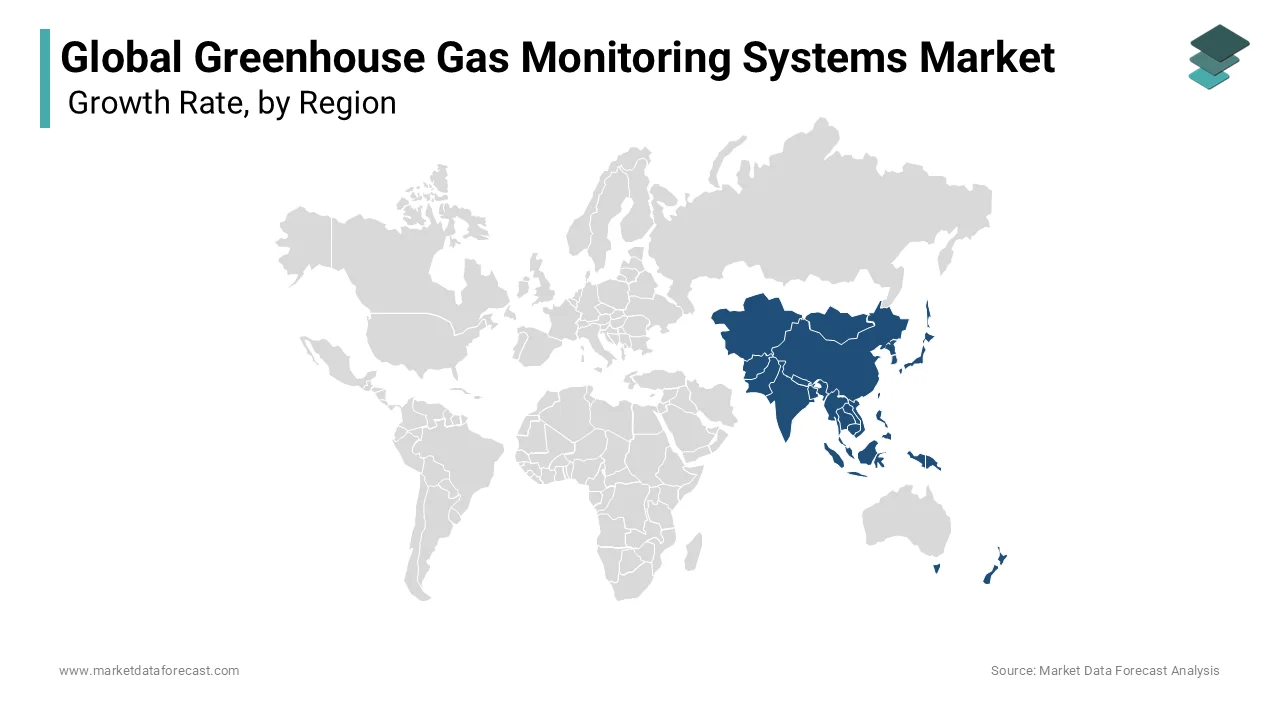Global Greenhouse Gas Monitoring Systems Market Size, Share, Trends, & Growth Forecast Report By Product Type (Laser Gas Analyzer and Gas Analyzer), Methodology (Carbon Dioxide Monitoring, Methane Gas Monitoring and Nitrous Oxide Monitoring) & Region, Industry Forecast From 2024 to 2033
Global Greenhouse Gas Monitoring Systems Market Size
The global greenhouse gas monitoring systems market was worth USD 3.22 billion in 2024. The global market is predicted to reach USD 3.41 billion in 2025 and USD 5.44 billion by 2033, growing at a CAGR of 6% during the forecast period 2025 to 2033.

MARKET DRIVERS
In today's world, the greenhouse gas monitoring systems market is one of the most rapidly growing markets.
One of the primary factors driving the global greenhouse gas monitoring systems market is the rise in environmental challenges resulting from climate change. In addition, the decisions and implementation of strict government regulations by major countries such as the United States, Japan, the United Kingdom, Germany, France, India, and Brazil, among others, to address climatic change by monitoring and controlling greenhouse gas emissions is expected to increase demand for these monitoring systems.
Moreover, the increasing usage of methane gas monitoring and nitrous oxide monitoring are also responsible for the global greenhouse gas monitoring systems market growth in the upcoming years. DIAL stands for range-resolved infrared differential absorption lidar, and it is used to measure methane emissions from several sources, including active and closed landfills. The DIAL measures methane emissions from individual sources by taking vertical scans above them and then spatially separating the scans. Measuring methane emissions is an important part of climate change research because methane is one of the most harmful gaseous hydrocarbons. One of the most common anthropogenic ozone-depleting gases in the atmosphere is nitrous oxide. Natural sources such as soil and rock and manmade processes such as farming emit it into the atmosphere. Nitrous oxide is also produced in the atmosphere as a result of a reaction in the lower thermosphere between nitrogen and electrically stimulated ozone. Therefore, these monitoring processes will further drive the global greenhouse gas monitoring systems in the next six years.
The direct measurement or detection of greenhouse gas emissions and levels is known as greenhouse gas monitoring. Carbon dioxide concentrations in the atmosphere can be measured using various techniques, including infrared spectroscopy and manometry. Other equipment is used to measure methane and nitrous oxide. Moreover, the Orbiting Carbon Observatory and networks of ground stations like the Integrated Carbon Observation System measure greenhouse gases from orbit. The different types of methodology of greenhouse gas monitoring include carbon dioxide monitoring, methane gas monitoring, and Nitrous oxide monitoring. In addition, the uses of Manometry, Infrared gas analyzer, and Titrimetry in carbon dioxide monitoring drive the global greenhouse gas monitoring systems market during the forecast period.
By first measuring the temperature, volume, and pressure of a specific amount of dry air. The air sample is dried in a series of dry ice traps before being collected in a five-liter bottle. A thermometer is used to take the temperature, and manometry is used to compute the pressure. The carbon dioxide condenses and becomes quantifiable by volume after introducing liquid nitrogen. In these pressure levels, the ideal gas law is accurate to 0.3 percent.
Moreover, infrared analyzers were utilized at Mauna Loa Observatory and Scripps Institution of Oceanography. Pumping an unknown sample of dry air through a 40 cm-long cell is how IR analyzers work. Dry carbon dioxide-free air is contained in a reference cell. Broadband IR radiation is emitted by a blazing nichrome filament, which splits into two beams and passes through the gas cells. Because carbon dioxide absorbs some of the radiation, more of it that travels through the reference cell reaches the detector than radiation that passes through the sample cell. A strip chart recorder is used to collect data. By calibrating with a known carbon dioxide content reference gas, the concentration of carbon dioxide in the sample can be determined. Therefore, these uses of carbon dioxide monitoring systems further fuel the greenhouse monitoring systems' market growth forward.
MARKET RESTRAINTS
On the other hand, some of the disadvantages of gas analyzers and laser gas analyzers tend to hamper the global greenhouse gas monitoring systems market growth. Poor stability and increased environmental effect, in particular, each sensor's selectivity is inaccurate, and the output parameters are unknown. As a result, these analyzers should not be used in situations where precise measurements are necessary.
REPORT COVERAGE
|
REPORT METRIC |
DETAILS |
|
Market Size Available |
2024 to 2033 |
|
Base Year |
2024 |
|
Forecast Period |
2025 to 2033 |
|
CAGR |
6% |
|
Segments Covered |
By Product Type, Methodology, and Region |
|
Various Analyses Covered |
Global, Regional & Country Level Analysis, Segment-Level Analysis, DROC, PESTLE Analysis, Porter’s Five Forces Analysis, Competitive Landscape, Analyst Overview on Investment Opportunities |
|
Regions Covered |
North America, Europe, APAC, Latin America, Middle East & Africa |
|
Market Leaders Profiled |
ABB Ltd, Emerson Electric Co., General Electric Company, Rockwell Automation Inc., Siemens AG, Parker Hannifin Corporation, Teledyne Technologies Inc., Thermo Fisher Scientific Inc., Enviro Technology Services Plc and Others. |
SEGMENTAL ANALYSIS
By Product Type Insights
Based on product type, the gas analyzer is anticipated to dominate the global greenhouse gas monitoring systems market during the forecast period. In addition, it's used to keep track of and help with things like process safety, quality assessments, efficiency analysis, and emissions monitoring. Moreover, in the gas analyzer, the infrared gas analyzer has the major portion. The quantity of various gases is measured using an infrared gas analyzer. When light is carried through the gas, the amount of a specific frequency of light absorbed by the gas determines the amount of gas. Different molecules in the air absorb different frequencies of light. Thus, measuring the absorbed frequency clearly reveals the amount of a specific gas in the atmosphere.

By Methodology Insights
Based on the methodology, carbon dioxide monitoring is anticipated to hold the largest global greenhouse gas monitoring systems market share in the next six years. In carbon dioxide monitoring, infrared gas analyzers dominate the market. Infrared analyzers were utilized at Mauna Loa Observatory and Scripps Institution of Oceanography. Pumping an unknown sample of dry air through a 40 cm-long cell is how IR analyzers work. Dry carbon dioxide-free air is contained in a reference cell. Broadband IR radiation is emitted by a blazing nichrome filament, which splits into two beams and passes through the gas cells. Because carbon dioxide absorbs some of the radiation, more of it that travels through the reference cell reaches the detector than radiation that passes through the sample cell. A strip chart recorder is used to collect data. By calibrating with a known carbon dioxide content reference gas, the concentration of carbon dioxide in the sample can be determined.
REGIONAL ANALYSIS
China is predicted to have emitted 27 percent of global GHG in 2019, followed by India (6.6%). Based on regional analysis, the Asia Pacific region is anticipated to dominate the global greenhouse gas monitoring systems market due to the increasing emissions of greenhouse gases, mainly in China. On the other hand, North America is predicted to have a significant CAGR during the forecast period, owing to the increasing government regulations and the release of greenhouse gases from the United States. Transportation accounted for 29% of GHG emissions in the United States in 2019, with energy accounting for 25%, industry for 23%, commercial and residential buildings for 13%, and agricultural for 10%. These greenhouse gas emissions are further causing climate change in the United States and throughout the world.

KEY MARKET PLAYERS
ABB Ltd, Emerson Electric Co., General Electric Company, Rockwell Automation Inc., Siemens AG, Parker Hannifin Corporation, Teledyne Technologies Inc., Thermo Fisher Scientific Inc. and Enviro Technology Services Plc are some of the notable companies in the global greenhouse gas monitoring systems market.
MARKET SEGMENTATION
This research report on the global greenhouse gas monitoring systems market has been segmented and sub-segmented into the following categories.
By Product Type
- Laser Gas Analyzer
- Gas Analyzer
By Methodology
- Carbon Dioxide Monitoring
- Methane Gas Monitoring
- Nitrous Oxide Monitoring
By Region
- North America
- Europe
- Asia Pacific
- Latin America
- Middle East and Africa
Frequently Asked Questions
What is driving the growth of the global greenhouse gas (GHG) monitoring systems market?
The growth of the GHG monitoring systems market is driven by increasing government regulations, international agreements like the Paris Climate Accord, rising environmental concerns, and the growing demand for monitoring tools to track emissions from industrial sectors. Companies and governments are focused on reducing carbon footprints and complying with stringent environmental standards, which is further boosting the adoption of these systems.
Which industries are the primary end-users of greenhouse gas monitoring systems?
The primary end-users of GHG monitoring systems include oil and gas, power generation, manufacturing, transportation, and agriculture. These industries are significant contributors to global GHG emissions and are increasingly adopting monitoring technologies to comply with environmental regulations and improve sustainability efforts.
What technological advancements are being seen in the GHG monitoring systems market?
Technological advancements include the integration of IoT, AI, and data analytics in GHG monitoring systems. These technologies allow for real-time data collection, improved accuracy, predictive maintenance, and remote monitoring of emission sources. Satellite-based GHG monitoring is also an emerging trend that allows for global, large-scale tracking of emissions.
How does the transition to renewable energy sources affect the GHG monitoring systems market?
The transition to renewable energy sources positively impacts the GHG monitoring systems market as it creates new opportunities for monitoring emissions reductions. Renewable energy installations, while lowering GHG emissions, still require monitoring systems to ensure compliance with environmental standards and to track progress in emission reduction goals. This expands the market for advanced monitoring solutions tailored to renewable energy projects.
Related Reports
Access the study in MULTIPLE FORMATS
Purchase options starting from $ 2500
Didn’t find what you’re looking for?
TALK TO OUR ANALYST TEAM
Need something within your budget?
NO WORRIES! WE GOT YOU COVERED!
Call us on: +1 888 702 9696 (U.S Toll Free)
Write to us: [email protected]